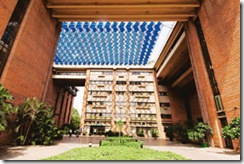McKinsey & Company recently came up with a comprehensive report titled “India’s Urban Awakening: Building inclusive cities, sustaining economic growth”. The executive summary of the report is below. The entire report in PDF format can be read here.
India’s urban awakening: Building inclusive cities, sustaining economic growth
India has a young and rapidly growing population—a potential demographic dividend. But India needs thriving cities if that dividend is to pay out. New MGI research estimates that cities could generate 70 percent of net new jobs created to 2030, produce around 70 percent of Indian GDP, and drive a near fourfold increase in per capita incomes across the nation.
Handled well, India can reap significant benefits from urbanization. MGI offers a range of recommendations, the vast majority of which India could implement within five to ten years. If India were to follow the recommendations, it could add 1 to 1.5 percent to annual GDP growth, bringing the economy near to the double-digit growth to which the government aspires.

